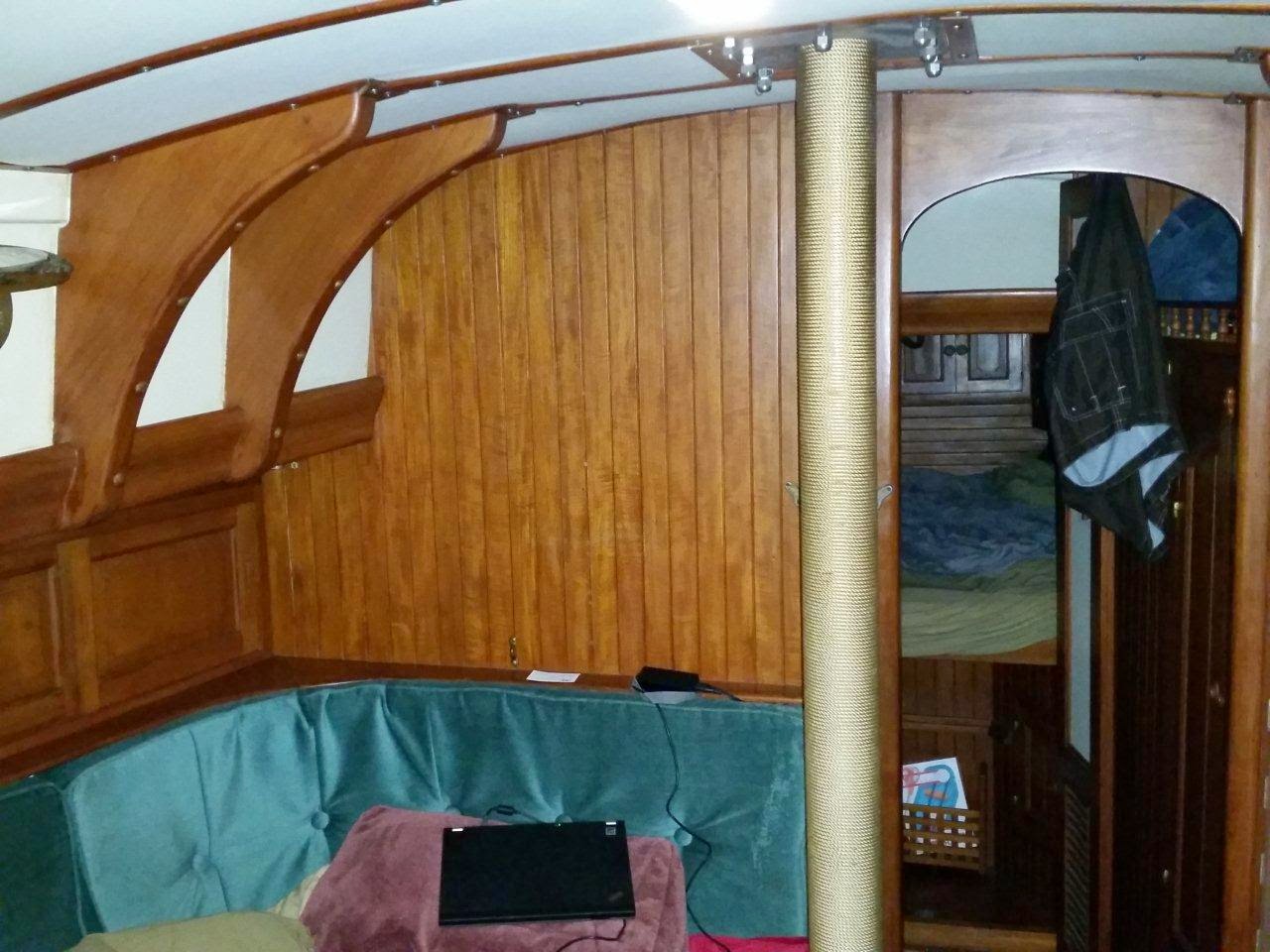In the search for a versatile solution for entertainment onboard, there were many options for prepackaged 12 volt TVs, but none of them had great reviews. I was inspired by some of the concepts Ben Ellison used for his “Chart Table 21” onboard M/V Gizmo (Panbo Chart Table 21). So I decided to try to find a television that I could run directly off of the boat’s 12 volt system without having to waste energy by using the inverter and then plugging in a power brick to convert back to DC. I also referenced Bob Stewart over at Island Time PC (Island Time PC). He has a nice list of monitors that can be run from 12 volt systems with a little bit of cord searching. In a moment of serendipity, I received my weekly Costco email listing their sales. One monitor stood out from the pack it was a Samsung T24C550ND. It was on sale for $150 (Amazon has it for the same price), much cheaper than any other 12 volt 24” display I could find. They actually sell it as a television as it has a built in tuner as well as a wonderful function called “ConnectShare” that allows you to plug in a USB drive to the back and watch videos, look at pictures, or listen to music directly from the drive. Having converted a large portion of my collection to digital formats for consumption on an iPad, having the ability to watch movies off a flash drive seemed like a wonderful development.
So step one was stopping by Costco on the way up to the boat. We got the TV and tested everything out with the included power brick to ensure it would run fine and that the ConnectShare feature worked the way that it was billed ( it plays at least .mp4 and .avi videos pretty much flawlessly). The next step was to try to figure out the best way to test out powering it from the 12 volt system. I had emailed Bob Stewart to get his input on the matter and he sagely recommended ordering a compatible 12 volt plug online because who would want to cut up a perfectly good power supply. Bob thought that it would likely have a 5.5 mm barrel plug, but when I started looking closer at the power plug, I discovered that the Model A4514 DDY 45W power supply had an OD of 6.5mm and an ID of about 4.3mm and that there was a central pin as well. A few hours of quality time with Google and some obscure AV and gaming forums turned up that this type of connector was most likely what is referred to as an EIAJ-05. And thanks to someone who goes by the online moniker of “Yeggster”, I was able to find the equivalent from several sources (Yeggster's comments) including one available locally at Radio Shack. So a quick trip to Radio Shack and another $10.50, and I had a 5 Amp DC plug and cable (way oversized) (PN 270048)and a type T tip (PN 273322) that looked pretty close to what came with the TV. The central pin, which I couldn’t reach with my calipers, looked a little bigger visually, but I thought it was worth a shot. Worst case scenario, I can always return the pieces locally if they don’t work.
Fortunately for me, everything fit up nicely and the TV works just as before only this time it’s running on 12 volt power. That will eliminate all of the losses associated with converting the power twice (DC to AC to DC) and help keep consumption to a minimum. According to Samsung, the unit draws 23W typical, 0.3W on standby and a max of 45W. I’ll pull everything back apart and add a little dielectric grease to the connections and wrap the connection where the tip plugs into the cord with some rescue tape to finish it all up.
Another advantage to this model monitor is that is that it as the standard VESA mounting holes on the back (75x75), so I can mount it on the bulkhead. I plan on using a Cheetah Mounts APDAM3B Dual Articulating Arm mount that is rated to hold up to 115 lbs television even though this one only weighs a little over 9 lbs without the stand. That’s a pretty significant safety margin that should be able to withstand pounding into some pretty heavy seas.
Image 2 The future home of the unit. Three-quarter of an inch wood screws will hold the mount solidly to the bulkhead
Future plans for the monitor include hooking it up as a second screen for the boat computer which will either be a 12 volt powered mini computer or a laptop as well as possibly a repeater screen for the nav system. It will also be home to a Chromecast which we should be able to get up running once the next project, an onboard wi-fi network, is completed.
Image 1 You can see the completed plug as well as the mounting holes and the additional connections available on the unit



